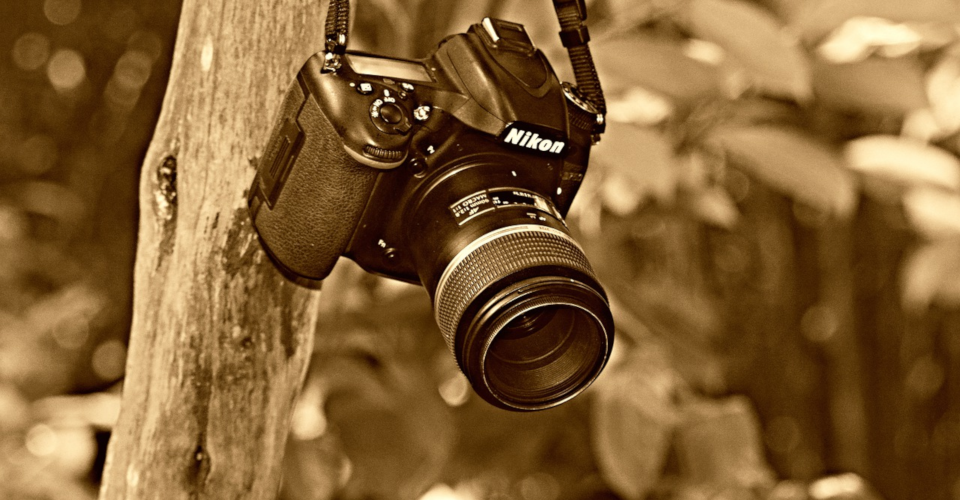6 Best Lenses for Nikon D750 in 2020
Nikon’s D750 was a ground-breaking camera when it first came out and enjoys a large following to this day. It makes a strong case as a mid-range full-frame DSLR aimed at APS-C and four-thirds users looking for an upgrade. It performs exceptionally well in low light, excels at burst shooting, and can keep subjects in focus as well as any other camera in its class. The only thing that’s missing is a worthy lens to pair it with.
These are the six best lenses for Nikon D750 you can currently buy. They cover the full focal range from wide-angle to telephoto, and we’ve thrown in a portrait prime and macro lens for good measure. Find out why they’re better than the rest and reach your D750’s creative limits.
| Budget |
|---|
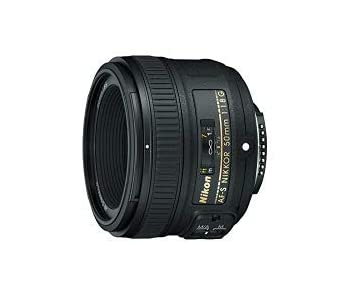 |
| Nikon AF-S NIKKOR 50mm f/1.8G |
| 4.3/5.0 |
| Type: Standard prime |
| Image stabilization: No |
| No chromatic aberration or barrel distortion. |
| Check Amazon |
| Best Value |
|---|
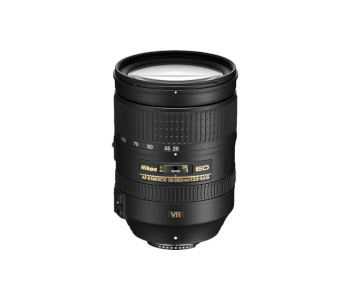 |
| Nikon AF-S NIKKOR 28-300mm f/3.5-5.6G ED VR |
| 4.6/5.0 |
| Type: All-in-one zoom |
| Image stabilization: Yes |
| Excellent image stabilization and autofocus. |
| Check B&H |
| Top Pick |
|---|
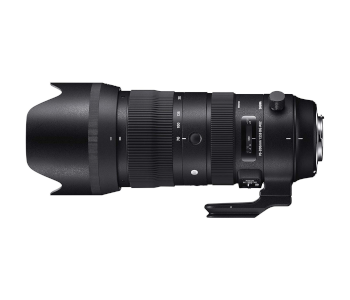 |
| Sigma 70-200mmF/2.8 DG OS HSM |
| 4.8/5.0 |
| Type: Telephoto zoom |
| Image stabilization: Yes |
| This has superb customization options. |
| Check Amazon |
Lenses for Nikon D750 Comparison Table
| Image | Product | Overall Rating | Image quality | Build quality | Versatility | Price |
|---|---|---|---|---|---|---|
 | Sigma 70-200mmF/2.8 DG OS HSM | 4.8 | 4.8 | 4.7 | 4.9 | Check Price |
 | Nikon AF-S NIKKOR 28-300mm f/3.5-5.6G ED VR | 4.6 | 4.4 | 4.5 | 4.8 | Check Price |
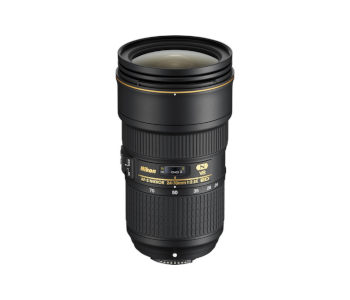 | Nikon AF-S NIKKOR 24-70mm f/2.8E ED VR | 4.6 | 4.5 | 4.6 | 4.7 | Check Price |
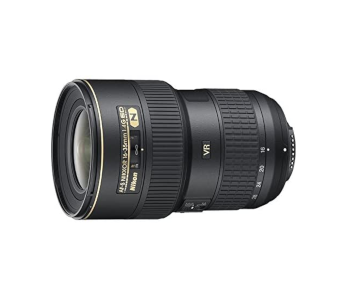 | Nikon AF-S FX NIKKOR 16-35mm f/4G ED VR | 4.5 | 4.6 | 4.5 | 4.5 | Check Price |
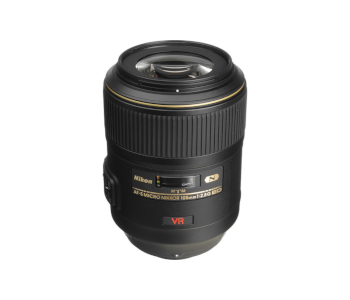 | Nikon AF-S VR Micro-Nikkor 105mm f/2.8G IF-ED | 4.4 | 4.4 | 4.3 | 4.5 | Check Price |
 | Nikon AF-S NIKKOR 50mm f/1.8G | 4.3 | 4.5 | 4.1 | 4.4 | Check Price |
1. Best Overall – Sigma 70-200mmF/2.8 DG OS HSM
Editor’s Rating: 4.8/5
Nikon has made some impressive telephoto lenses in the past, but we believe that Sigma’s 70-200mmF/2.8 DG OS HSM is the best choice. It’s negligibly softer than Nikon’s flagship lenses yet considerably cheaper. Buying it gets you superb customizability, outstanding optical properties, and beautiful bokeh for a zoom lens. You’ll love it if you’re a news, sports, or portrait photographer.
Overview of Features
The 70-200mmF/2.8 DG OS HSM is a massive telephoto lens with a build quality that matches its weight. The matte black barrel is metal, and there are seals around all major components, making it impervious to the elements and dust. Its outer glass is coated with anti-glare as well as fluorine solutions that make it easier to clean dirt and fingerprints. The lens is eight inches long and comes with a fixed tripod collar with an Arca-Swiss mount and can be rotated 90 degrees for vertical shooting.
You can customize the 70-200mmF/2.8 DG OS HSM’s performance with several buttons and switches located on its barrel. Four buttons arranged in 90-degree increments accept custom functions. There’s a limiter that speeds up autofocus by constraining it to subjects that are ten feet away or more. You can leave focusing up to the lens and your D750, override it manually, or take full control. There’s also an image stabilization toggle you can either turn off, set for general use, or for situations where you need to pan the D750 a lot.
The 70-200mmF/2.8 DG OS HSM boasts excellent sharpness. It has a fixed max aperture of f/2.8 that’s always slightly softer than the next stop but well within top-tier territory. Corner resolution is lower at that aperture but starts catching up to the center as both reach their pinnacle at f/5.6. The lens performs optimally at 70mm, and its sharpness predictably drops as you reach 200mm.
Sigma outfitted the 70-200mmF/2.8 DG OS HSM with an 11-bladed diaphragm that produces beautifully rounded and even bokeh at wide apertures and striking sun stars when you switch to f/16. There’s a bit of distortion at either end of the focal length, but it’s controlled well. We’ve encountered no chromatic aberration whatsoever, and the lens’s hood & coating combo provide great resistance to flare.
What We Didn’t Like
The 70-200mmF/2.8 DG OS HSM is very heavy. Four pounds of weight and eight inches in length dwarf the D750 and start to take their toll on you quickly. There’s noticeable vignetting at f/2.8, but you can either correct for it in-camera when shooting JPEGs or reduce the aperture by one stop to get rid of it.
| Tech Specs |
|---|
| Dimensions: 3.7 x 3.7 x 8 in. |
| Weight: 4 lbs. |
| Type: Telephoto zoom |
| Minimum focal length: 70mm |
| Maximum focal length: 200mm |
| Maximum aperture: f/2.8 |
| Minimum aperture: f/22 |
| Minimum focus distance: 3.9 ft. |
| Angle of view: 34.3° to 12.3° |
| Image stabilization: Yes |
| The Pros |
|---|
| Excellent sharpness, build quality, and optics at a reasonable price |
| Effective image stabilization |
| Superb customization options |
| Great tripod mount |
| The Cons |
|---|
| Very heavy |
| Shows strong vignette when wide open |
2. Best Value – Nikon AF-S NIKKOR 28-300mm f/3.5-5.6G ED VR
Editor’s Rating: 4.6/5
The NIKKOR 28-300mm f/3.5-5.6G ED VR is economical in more ways than one. On the one hand, it has a broad focal range and is able to replace several primes. On the other, its blend of excellent sharpness and decent build quality is available at an appealing price. It’s the perfect choice if you aren’t quite ready to step up to pro level but need a one-size-fits-all lens that will do equally well for travel, portraits, sports, or events.
Overview of Features
Compared to our overall winner, the NIKKOR 28-300mm f/3.5-5.6G ED VR is lighter and more compact despite having a longer focal range. It doesn’t have a fixed length since the barrel extends outward when zooming, resulting in a varying minimum aperture. The plastic body feels well-made and is brimming with physical controls. The focus ring could be thicker, but it and the zoom ring respond promptly with little effort.
This is a stabilized lens whose autofocus is driven by a dependable Silent Wave Motor. Setting it to M/A lets you override autofocus settings by moving the focus ring, but such adjustments aren’t needed frequently. Vibration Reduction does an excellent job of stabilizing your photos. One of its two modes counteracts shaky hands yet ignores wide movements. The other ramps stabilization up to include all motion and is great for sports & wildlife photos.p
The NIKKOR 28-300mm f/3.5-5.6G ED VR boasts excellent central sharpness across the board. Its corners are soft at maximum aperture but quickly catch up once you decrease it by a stop or two. The lens shines in the 70-100mm range, delivering uniformly sharp results at f/5.6. Zooming in further introduces some softness you can easily get rid of by setting the focal length to f/8.
Other optical properties aren’t world-class, but they aren’t bad either. The lens is slightly less complex than Nikon’s standard zoom, so ghosting and flares aren’t an issue. There’s some chromatic aberration at 28mm and f/3.5. Changing either setting leads to dramatically better results. We liked the lens’s creamy bokeh, which manages to look smooth and renders lovely backgrounds despite low max apertures at longer focal lengths.
What’s Bad About It?
The NIKKOR 28-300mm f/3.5-5.6G ED VR has pronounced distortion. The barrel variety is strong at 28mm and quickly shifts to pincushion distortion that remains consistent from 100mm onward. The lens is also prone to focus breathing, i.e., it changes focal length as you’re adjusting focus. That won’t be a problem for photography, but it does make it a lousy choice for video.
| Tech Specs |
|---|
| Dimensions: 3.3 x 3.3 x 4.5 in. |
| Weight: 1.8 lbs. |
| Type: All-in-one zoom |
| Minimum focal length: 28mm |
| Maximum focal length: 300mm |
| Maximum aperture: f/3.5 to 5.6 |
| Minimum aperture: f/22 to 36 |
| Minimum focus distance: 1.6 ft. |
| Angle of view: 74° to 8° 10′ |
| Image stabilization: Yes |
| The Pros |
|---|
| Excellent value for the money |
| Compact and versatile thanks to wide focal length |
| Excellent image stabilization and autofocus |
| Good sharpness, especially at 100mm, f/5.6 |
| The Cons |
|---|
| Strong barrel and pincushion distortions |
| Strong focus breathing |
3. Nikon AF-S NIKKOR 24-70mm f/2.8E ED VR
Editor’s Rating: 4.6/5
A standard zoom lens is the second most important part of a photographer’s kit, and the NIKKOR 24-70mm f/2.8E ED VR is the best Nikon has to offer for its full-frame lineup. It’s built to last a lifetime, has balanced sharpness landscape and architecture photographers will adore and impresses with its speedy autofocus. The lens doesn’t excel in every optical property, but the sum of its parts makes for stunning photos no matter the occasion.
Overview of Features
The NIKKOR 24-70mm f/2.8E ED VR is built to Nikon’s highest standards, as evidenced by its magnesium barrel and 20 elements arranged in a complex array of 16 groups. These include an aspherical Extra Dispersion element – a first for Nikon – that reduces the amount of chromatic aberration. The optics and electronics inside are protected from moisture, dust, and extreme temperatures. The lens weighs 2.3 pounds and feels top-heavy on the D750, but that’s the price you’ll have to pay for excellence.
Vibration reduction is one of the biggest advantages the NIKKOR 24-70mm f/2.8E ED VR has over its predecessor. It reduces camera shake by four stops when handheld, allowing you to take clear phots while keeping shutter speeds high. Autofocus is equally impressive, thanks to a new generation of Silent Wave Motor. It’s quiet enough for film work and barely slower in low light than in optimum conditions. Alternatively, you can always use the smooth focus ring.
The NIKKOR 24-70mm f/2.8E ED VR’s sharpness is a controversial subject that needs demystifying. Yes, its peak center performance is softer than the older model’s. However, the new lens has much more balanced image clarity across the entire frame and delivers exceptional mid and edge quality even when wide open. Portrait photographers might grumble about this, but landscape lovers will have a field day.
The presence of several anti-glare coatings and a sizeable lens hood make the NIKKOR 24-70mm f/2.8E ED VR great at neutralizing flares. Putting the sun in the frame’s edge might make some artifacts appear, but any other position will be fine. Aspherical elements usually hurt bokeh quality, but you can get away with a nice background blur provided it’s darker than the subject.
What We Didn’t Like
The NIKKOR 24-70mm f/2.8E ED VR has two optical shortcomings, both of which are easy to deal with by either stepping down or loading its profile up in your post-processing software of choice. There’s strong barrel distortion at 24mm that transitions into pincushion distortion past 50mm. The lens also exhibits chromatic aberration at 24mm, f/2.8.
| Tech Specs |
|---|
| Dimensions: 3.5 x 3.5 x 6.1 in. |
| Weight: 2.3 lbs. |
| Type: Standard zoom |
| Minimum focal length: 24mm |
| Maximum focal length: 70mm |
| Maximum aperture: f/2.8 |
| Minimum aperture: f/22 |
| Minimum focus distance: 1.3 ft. |
| Angle of view: 84° to 34° 20′ |
| Image stabilization: Yes |
| The Pros |
|---|
| Balanced sharpness across the frame |
| Exceptional build quality |
| Quick and accurate autofocus |
| Effective image stabilization |
| The Cons |
|---|
| Pronounced barrel and pincushion distortions at either end of the focal range |
| Strong CA when wide open |
4. Nikon AF-S FX
Editor’s Rating: 4.5/5
Nikon stirred up the Wide-angle lens market by introducing the NIKKOR 16-35mm f/4G ED VR, the world’s first wide-angle lens with image stabilization. Adding VR to lenses traditionally used for landscapes and architecture was expensive and long considered redundant, but its presence on this lens makes it the finest Nikon has to offer for nighttime cityscapes, group, and wedding photos in poor light.
Overview of Features
We were pleasantly surprised by the NIKKOR 16-35mm f/4G ED VR’s lightness and portability. Much of this is attributable to its plastic yet solid-feeling barrel. The lens is weather-sealed and has Nano coating on its outer elements for better glare handling. The zoom and focus rings rotate smoothly and are easy to grip thanks to being knurled.
Vibration Reduction is the NIKKOR 16-35mm f/4G ED VR’s star feature. It allows you to handhold the D750 and get tack-sharp images at absurdly long exposure times. We’re talking shutter speeds of 1/1 seconds in dim light! That’s enough for stunning astrophotography and detailed nightscapes, all without having to use a tripod. The new image stabilization works in tandem with Nikon’s tested Silent wave Motor to deliver instantaneous and silent results.
The NIKKOR 16-35mm f/4G ED VR has excellent central and mid-image sharpness across its focal length and aperture range. The corners are soft at f/4, so you’ll want to step down to f/5.6 or f/8 for optimum performance. The lens renders colors beautifully regardless of settings, and it retains a lot of detail during high-contrast scenarios, even when shooting directly into the light.
Wide-angle lenses aren’t known for their bokeh quality, but the NIKKOR 16-35mm f/4G ED VR renders creamy backgrounds at f/4. Some vignetting is apparent at its shortest focal length and straightforward to correct. You’ll also want to pick an aperture before honing in on a subject as the lens is prone to focus shift.
What We Didn’t Like
All wide-angle lenses have some barrel distortion, but the NIKKOR 16-35mm f/4G ED VR is worse than most. Its barrel distortion reaches close to six percent at 16mm, which makes it unusable for architecture work at that focal length. Fortunately, zooming in to 20mm gets rid of the issue. Lateral CA is strong when the lens is wide open.
| Tech Specs |
|---|
| Dimensions: 3.3 x 3.3 x 4.9 in. |
| Weight: 1.5 lbs. |
| Type: Wide-angle zoom |
| Minimum focal length: 16mm |
| Maximum focal length: 35mm |
| Maximum aperture: f/4 |
| Minimum aperture: f/22 |
| Minimum focus distance: 11.4 in. |
| Angle of view: 107° to 63° |
| Image stabilization: Yes |
| The Pros |
|---|
| Fantastic image stabilization |
| Lightweight but built to last |
| Vignetting and flare are controlled well |
| Good overall sharpness |
| The Cons |
|---|
| Strong chromatic aberration at 16mm, f/4 |
| Pronounced barrel distortion at 16mm |
5. Nikon AF-S VR Micro-Nikkor 105mm f/2.8G IF-ED
Editor’s Rating: 4.4/5
The VR Micro-Nikkor 105mm f/2.8G IF-ED is a macro lens first and foremost, but its outstanding optics allow it to double as your go-to option for architectural photography. It’s capable of 1:1 magnification when focusing at one foot, meaning that butterflies, daisies, and other small subjects will occupy a life-sized spot on your D750’s full-frame sensor. The lens is not cheap, but it’s among the most versatile in Nikon’s professional lineup.
Overview of Features
Like other Nikkor lenses, this one is built to the highest standard. It’s lighter than most as its body is a weather-sealed combination of polycarbonate and metal. Switches on the barrel’s side toggle the focus mode, turn image stabilization on or off and limit the minimum focusing distance to two feet when you aren’t doing macro work. Markings on the barrel’s front show the current focusing distance and what magnification ratio you can achieve.
Vibration reduction and the Silent wave Motor are an accomplished duo that works well on the VR Micro-Nikkor 105mm f/2.8G IF-ED. Documentary filmmakers will appreciate how silent the lens is while everyone will benefit from stabilized handheld shots. Keep in mind that the stabilization is less effective the closer the focusing distance, so you might still need a tripod when dealing with tiny subjects in challenging light.
The VR Micro-Nikkor 105mm f/2.8G IF-ED is exceptionally sharp. Central sharpness is a must for macro lenses and starts out strong at f/2.8. It’s the corners that are more impressive as they don’t trail behind, making for uniformly detailed pictures throughout the lens’s f-stop range. You’ll want to set the aperture to f/5.8 to get the most out of it, but any setting higher than f/22 will look amazing.
The lens arrives with a deep barrel hood and is treated with Nano Crystal coating. You can further increase its performance in sunlight by attaching ND filters or polarizers to its fixed 62mm filter thread. You can look forward to dreamy, perfectly circular bokeh that doesn’t become distorted as you narrow the aperture. There isn’t a hint of barrel distortion, and vignetting is a minor nuisance.
What’s Bad About It?
A minimum focusing distance of one foot leaves little room for error. On the one hand, it’s hard to position the lens and not affect the amount of light at your disposal. On the other, skittish subjects like insects might get scared and fly off while you’re setting up a shoot.
| Tech Specs |
|---|
| Dimensions: 3.3 x 3.3 x 4.6 in. |
| Weight: 1.6 lbs. |
| Type: Macro |
| Focal length: 105mm |
| Maximum aperture: f/2.8 |
| Minimum aperture: f/32 |
| Minimum focus distance: 1 ft. |
| Angle of view: 23° 20′ |
| Image stabilization: Yes |
| The Pros |
|---|
| Outstanding optical properties |
| Razor-sharp regardless of aperture |
| Solid build quality and weather sealing |
| VR helps with handheld shooting |
| The Cons |
|---|
| Close focusing distance makes setting up a shot tricky |
6. Best Budget Option – Nikon AF-S NIKKOR 50mm f/1.8G
Editor’s Rating: 4.3/5
Standard primes with a focal length of 50mm have a neutral viewing angle and capture photos as human eyes see them. Nikon has several “nifty-fifties” on offer, but none is as cost-effective and optically impressive as the NIKKOR 50mm f/1.8G. It creates wonderful bokeh, boasts fantastic central sharpness, and focuses quickly. It’s hard to believe that this lens costs less than $200! Whether you’re a hobbyist or pro, there’s no better deal if you’re after a capable lens for portrait or product photography.
Overview of Features
The NIKKOR 50mm f/1.8G is the smallest and by far the lightest lens on review, weighing in at less than 7 ounces. It’s not up to Nikon’s premium standards, but the plastic body and metal lens mount aren’t flimsy either. There’s a rubber gasket around the mount that protects the lens from dust buildup. It isn’t weatherproof otherwise. The focus ring is close to the front and nicely damped.
We were pleasantly surprised by the NIKKOR 50mm f/1.8G’s autofocus speed. The more expensive Nikon AF-S FX NIKKOR 50mm f/1.4G is one stop brighter but takes twice as long to acquire a target. Our budget pick has no trouble keeping up with moving subjects in continuous AF mode in good light. It starts to hunt as brightness decreases, but that’s to be expected. You might want to give Nikon’s other 50mm prime a try if you’re a filmmaker since the NIKKOR 50mm f/1.8G’s autofocus is loud.
This is another lens with central sharpness that starts out great only to become outstanding at f/5.6 to f/8. The mids and corners steadily improve as well but never reach central sharpness heights. That makes the NIKKOR 50mm f/1.8G great for portraits at wide apertures since detail disparity can be masked by background blur. And what a blur it is! The lens delivers marvelous bokeh with no pronounced edges or onion rings through f/2.8
Other optical characteristics are decent too. There’s barrel distortion so slight that it isn’t worth mentioning, and ghosting or flares aren’t problematic either. The lens handles both lateral and longitudinal CA well, so feel free to snap pictures of jewelry, bicycles, and other shiny objects.
Are There Drawbacks?
The NIKKOR 50mm f/1.8G lacks image stabilization. Its wide max aperture makes the lens great for low-light and action photos, but you’ll have to mount the D750 on a tripod to avoid blurriness.
| Tech Specs |
|---|
| Dimensions: 2.8 x 2.8 x 2.1 in. |
| Weight: 6.5 oz. |
| Type: Standard prime |
| Focal length: 50mm |
| Maximum aperture: f/1.8 |
| Minimum aperture: f/16 |
| Minimum focus distance: 1.5 ft. |
| Angle of view: 47° |
| Image stabilization: No |
| The Pros |
|---|
| A sharp and dependable prime at a rock bottom price |
| Fast autofocus in good light |
| No chromatic aberration or barrel distortion |
| Creates exceptional bokeh |
| The Cons |
|---|
| No image stabilization |
| Slow to focus in low light |
Contents
- Lenses for Nikon D750 Comparison Table
- 1. Best Overall – Sigma 70-200mmF/2.8 DG OS HSM
- Overview of Features
- What We Didn’t Like
- 2. Best Value – Nikon AF-S NIKKOR 28-300mm f/3.5-5.6G ED VR
- Overview of Features
- What’s Bad About It?
- 3. Nikon AF-S NIKKOR 24-70mm f/2.8E ED VR
- Overview of Features
- What We Didn’t Like
- 4. Nikon AF-S FX
- Overview of Features
- What We Didn’t Like
- 5. Nikon AF-S VR Micro-Nikkor 105mm f/2.8G IF-ED
- Overview of Features
- What’s Bad About It?
- 6. Best Budget Option – Nikon AF-S NIKKOR 50mm f/1.8G
- Overview of Features
- Are There Drawbacks?

